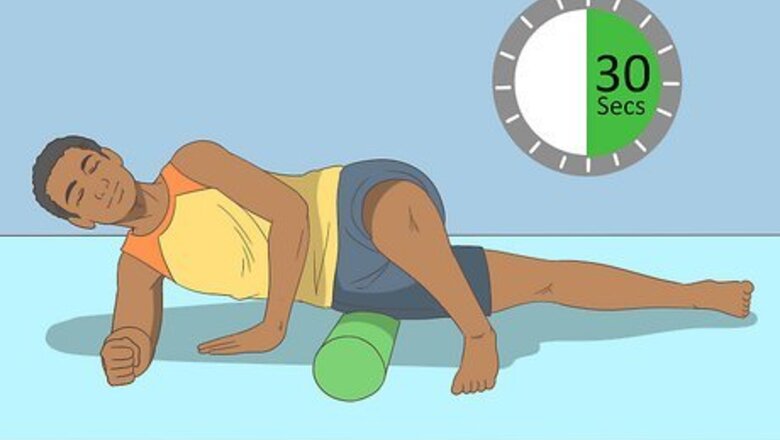
views
X
Research source
With anterior pelvic tilt (APT) your lower back appears overly arched forward. With posterior pelvic tilt (PPT) your back arches out backwards. The good news is that both types of pelvic tilt are usually treatable with an exercise regimen and some lifestyle changes. Working with your doctor or a trainer can also help you to straighten out your tilt. Doing exercises that strengthen your core abdominal, back, and hip muscles can improve your hip alignment and help with both types of pelvic tilt.
Stretching and Strengthening Your Muscles
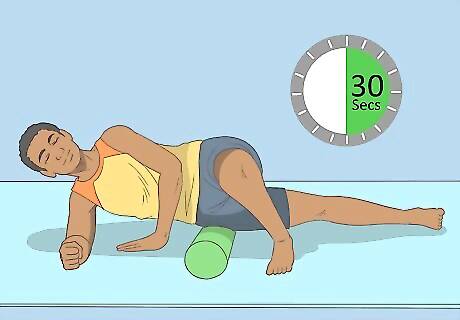
Foam roll your pelvic area each day. Place a foam roller on an exercise mat. Then, lay down on your side on the mat with the roller touching your hip area. Support your head with a bent arm and bend your knees for stability, too. Use your feet to gently push your body up and down the roller around the hip area. Continue for 30 second intervals before pausing and repeating. This roller stretch may not completely fix your pelvic tilt, but it can help to lengthen the muscles surrounding your pelvis. You can use a foam roller while at the gym. They are also sold at athletic and fitness stores.

Perform a kneeling hip flexor stretch each day. Kneel down so that your left knee makes contact with the exercise mat, but your right knee stays positioned over your right foot. Keep your spine straight. Push your weight forward towards the right hip. Keep this pressure on for 30 seconds before releasing and switching legs. This is a great stretch for people who are sitting a lot during the day, which is a common problem with sufferers of pelvic tilt.
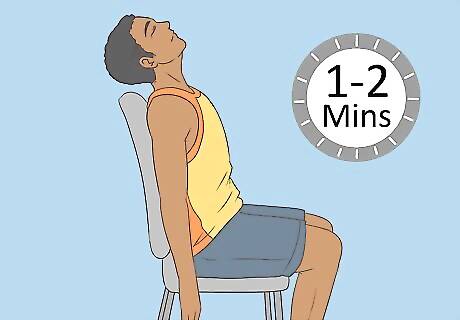
Stretch your lower back daily. Sit on a sturdy chair. Let your arms, shoulders, and head hang down off the chair in a relaxed way. Imagine releasing all of the muscles in your upper body and pushing everything toward the ground. When you start to feel a stretching sensation continue in this position for 1-2 minutes. After this stretch, stand up and wiggle your upper body around to release any tension. Repeat this complete process 3-4 times.
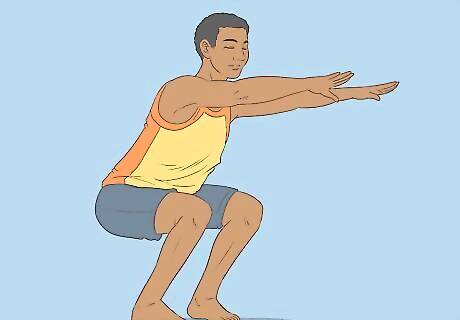
Do a squat. Position your feet apart and slightly wider than your hips. Take a deep breath in and lower your hips towards the ground. Keep going until your knees are just about to extend past your toes. Your thighs will be parallel to the ground. Breathe out and rise up to a standing position. This exercise is great for building strong buttock muscles, which will improve your overall posture. Your toes should be angled slightly outwards. Try to do this exercise at least 2 times per week.
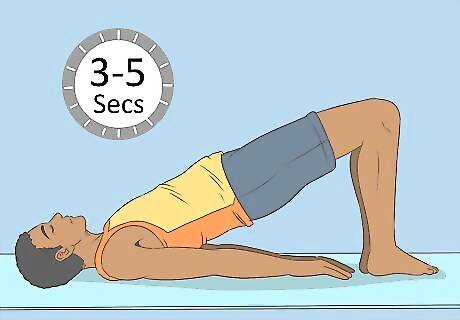
Do a pelvic tilt. Lie down with your knees bent upwards. Flex your stomach (ab) muscles until your back lifts off the floor. Continue to push your pelvis upwards until you back is almost straight. Count out between 5-10 seconds before releasing your muscles and lying back on the floor. This exercise helps to develop your core and keep your pelvis aligned. Repeat this exercise twice a week for as many reps as you like, but make sure to stop if your back shows signs of strain.
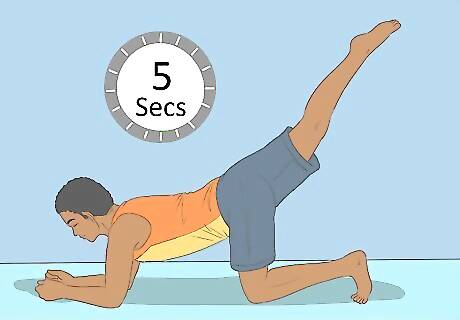
Complete kneeling rear leg raises. Position yourself on all fours on an exercise mat. Spread your weight out evenly across your hands and knees. Flex your abs and push your right leg back out straight behind you. Hold it level for 5 seconds before pulling it back in. Repeat with the same leg or alternate. This exercise helps to extend your back and pelvic muscles. In the starting position, place your knees directly under your hips and your hands below your shoulders. Try to do this exercise 2-3 times per week.
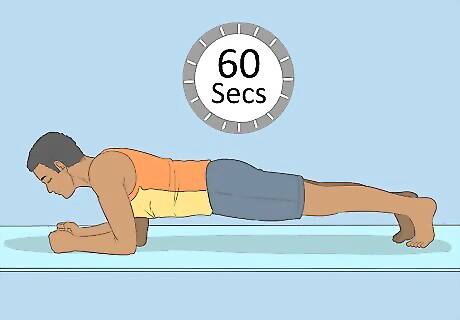
Perform a plank. Place yourself face down on an exercise mat. Place your hands under your shoulders. Flex your stomach muscles until they lift you off the ground. Keep your spine straight. Hold this position for as long as you can before releasing. This is a great exercise for developing your back muscles that help to hold your pelvis in place. Do this exercise 3 times per week. Over time, try to build up to a 60-second plank. When done correctly, a plank position will look very similar to a traditional push-up. The main difference is that you are not pumping up and down off the ground.
Making Lifestyle Changes
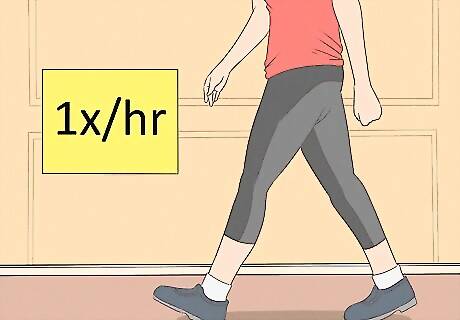
Get up and move every hour. One of the main risk factors for pelvic tilt is spending too long in a sitting position each day. Set a timer on your phone to remind you to take a quick walk around your office or home once every 60 minutes. Even standing and stretching in place can make a difference. Make this more fun by enlisting others to walk around with you for a few minutes every hour on the hour.
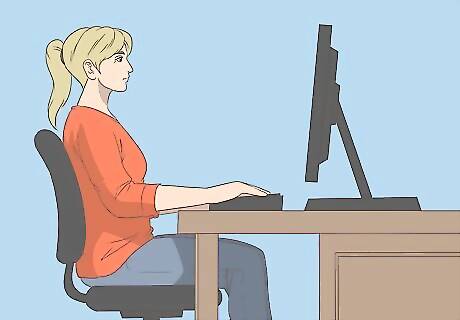
Adjust your office chair, desk, and monitor to keep your back straight. Move around the levers on your office chair until it keeps your spine straight when sitting. Then, position your desk so that you don't have to slouch to use it. The same goes with your monitor. This may mean setting your monitor up on a slightly raised platform. If your chair isn't adjustable, try placing a memory foam pad at the back to provide more spine support.

Give yourself a few months to see results. It will take time to build up your muscles once more. Keep in mind that your body might be changing in the interior without showing external improvements. Track your exercises and you'll see that you are doing better every week. You can keep track of the number of exercise sets and reps that you finish by each week by using a fitness app or simply writing them down on paper. If you are in pain, log your pain on a scale of 0 (no pain) to 5 (extreme pain) each week. Watch to see if your pain levels diminish over time.
Getting Expert Treatment

Consult with your doctor before starting treatment. Before you implement a new exercise program, talk with your doctor and see if they have any suggestions to address your pelvic tilt. It's also important to see your doctor if you are suffering any pain in your pelvis or back, as this could indicate a more serious problem. General practitioners usually refer children on to an orthopedic specialist who can help to ensure that the child's spine develops properly.
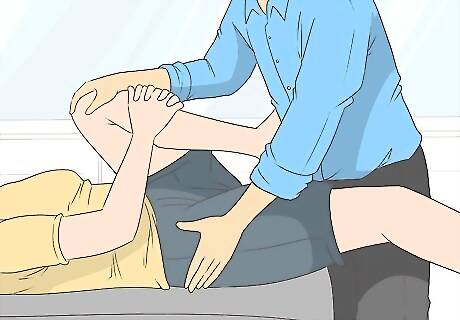
Perform the Thomas test for a partial diagnosis. This is one way for your doctor to identify if you are suffering from pelvic tilt. It can also be used to gauge your progress as you work to fix your tilt. Lie down on a table with your knees and lower legs hanging off the side. Flex one leg and pull it toward your upper body. Repeat with the other side. With a properly aligned pelvis, your resting leg will stay in place on the table when you lift the other one. Any raising movement from the resting leg is a possible indication of pelvic tilt. As you improve, do this test at home and watch to see if your resting leg stays closer to the table over time.
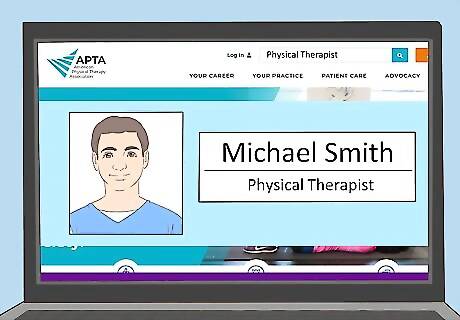
Find a physical therapist. Ask your primary physician for therapist suggestions. You can also go to the website of the American Physical Therapy Association at www.apta.org and search for therapists in your area. Look for one that has experience working with patients suffering from pelvic tilt or other back/pelvic problems.
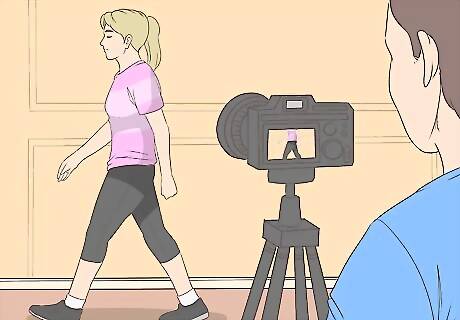
Let your therapist video your walking or running movements. It's sometimes hard to determine if your pelvis is in the proper position when you are in the middle of a physical activity. Your therapist will likely suggest taking a quick side-view video of you walking or running. Then, you both can look over the video to see if your hips seem to be pushed forward or backward.
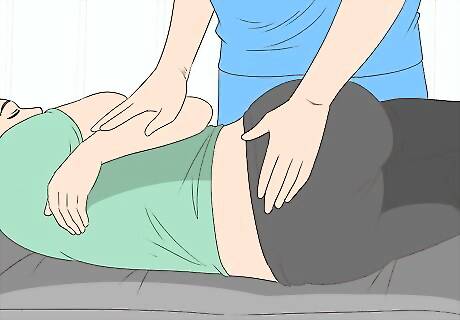
Work with a chiropractor. Ask your doctor to recommend a trustworthy chiropractor who has experience assessing and treating pelvic tilt. A chiropractor can evaluate your pelvic tilt and work with you to come up with a treatment plan. Check to make sure your chiropractor is licensed by your local chiropractic licensing and regulation board.



















Comments
0 comment